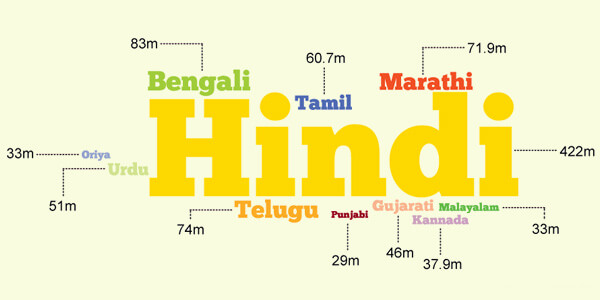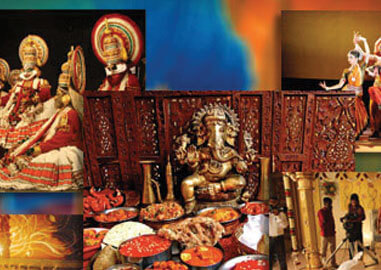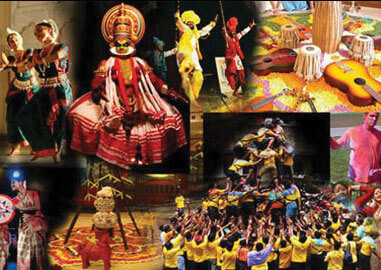
How many Languages are there in India?
Posted By JohnIndia is known as the largest democracy in the world with a rich history and culture. It is constituted by states which represent different regions. Each region has its own culture, tradition and most importantly its own language. Do you know how many languages are there in India? Let’s go ahead to find it now.
India proudly houses a number of speech communities belonging to different families of languages. There are hundreds of languages which are further classified into two categories, i.e. major groups and minor groups.
Language Families—Categories:
The major groups of languages are named as follows:
- Indo-Aryan Languages.
- Dravidian Languages.
- Austroasiatic.
- TibetoBurman.
Apart from these major groups, there are quite a few minor groups, categories and isolates. The popularity of each group of language can be gauged through these statistics. Indo-Aryan languages are spoken by 75% of the population while the Dravidian varieties are spoken by 20% of the Indians. The remaining 5% is constituted by the other families.
Languages in India:
According to a recent survey conducted by the Peoples Linguistic Survey of India also known as PLSI, there are about 780 languages that are currently spoken in different states and districts of India and as many as 86 different scripts are used across the country. This number varies across different sources. Some claim it to be 1599. This variation is primarily due to the difference between “language” and “dialect”. Every state has a different speech community. One is official while others are regional, spoken by people living in different areas of the same state. Bengal is the richest state when it comes to linguistic varieties and scripts. There are 38 varieties being spoken in this state only, and around nine scripts are used. Efforts are being made to develop new scripts to be used. The surprising thing here is that there are 10 languages that are endangered. It is alarming and efforts must be made to revive and protect them.
Popular Languages:
Of the 780 tongues used in the country, 22 are those that were listed in 8th Schedule of Constitution. Around 122 others are claimed to be spoken by over 10,000 people in the country.
National Language:
Do you know how many languages are there in India that have official status? The National Language of India was chosen to be Hindi and it was claimed that by the year 1965, English will be completely eliminated from the official scenario in the country. On the contrary, this choice caused many disputes amongst the people living in different states of the country. The disputes caused a stir especially in the southern states, which claimed that Hindi was imposed on them and they did not wished it to be their National Language. Since the number of speech systems and the people who spoke them were so large in number, it was decided to keep both English and Hindi as their official language. Till date both these languages have this status. There is no language which alone holds the status of their National Language.
Names of the Popular Languages:
Although the list of the names of languages spoken in India is huge, Hindi is still considered to be the most spoken one in the country especially in the Northern region of India.
Thirteen other main languages are spoken by 1% of the population. They are also referred as the scheduled languages of the constitution. Scheduled languages spoken by less than 1% are as follows:
- Santali.
- Nepali.
- Sindhi.
- Manipuri.
- Dogri.
- Bodo.
- Sanskrit.
It is surprising to find that Sanskrit is owned by less than 1% of the population. (Resourced by the census of 2001). There are many languages that are non-scheduled. The most popular are listed below in descending order of popularity:
- Bhili.
- Gondi.
- Kumaoni.
- Tulu.
- Kurukh.
The most popular tongues have a minimum of a million native speakers. They are enlisted as follows along with the number of their native speakers as of the last census:
- Hindi Languages: 366 million Speakers.
- Bengali: 207 million Speakers.
- Telugu: 69.7 million Speakers.
- Marathi: 68.0 million Speakers.
- Tamil: 66.0 million Speakers.
- Urdu: 60.3 million Speakers.
- Gujarati: 46.1 million Speakers.
- Kannada: 35.3 million Speakers.
- Malayalam: 35.7 million Speakers.
- Oriya: 32.3 million Speakers.
- Punjabi: 57.1 million Speakers.
- Assamese: 15.4 million Speakers.
- Maithili: 24.2 million Speakers.
Endangered Languages:
According to a survey a large number of linguistic entities have become endangered. The government needs to pay heed to this issue and show concern in restoring these tongues and their scripts. People who speak them are decreasing and they are being lost and overshadowed by others. The government must take pride in its diverse linguistic heritage. People around the world are intrigued by this unique legacy of India and the government should try its best to keep this unique legacy by restoring endangered varieties and also by developing new scripts. The number of languages that are threatened to be endangered and close to extinction is around 52.
Importance of Language:
Languages depict the culture and heritage of any country. The vast variety, spoken in India, quintessentially reflects the diverse culture of the country. Every region has its own accents and dialects. States falling in similar regions have speech systems which are more or less similar to each other. Language is also related to the history of the country. These also represent the rich history of this region which has been ruled by different rulers from different religions and areas of the world. People should take pride in their native tongues and research and write in their respective scripts not only to preserve them but also to make them flourish.
India Country - Latest Articles

Religious and Social Customs in India Which are Definite to Follow
Posted By KathleenTraditions and customs have always been given a great deal of significance by people...

How many Languages are there in India?
Posted By John DoeIndia is known as the largest democracy in the world with a rich history and culture. It is...

Interesting Facts about India-Food, History & Culture
Posted By MariaIndia is one of the most popular countries of the world owing to its historical background...
